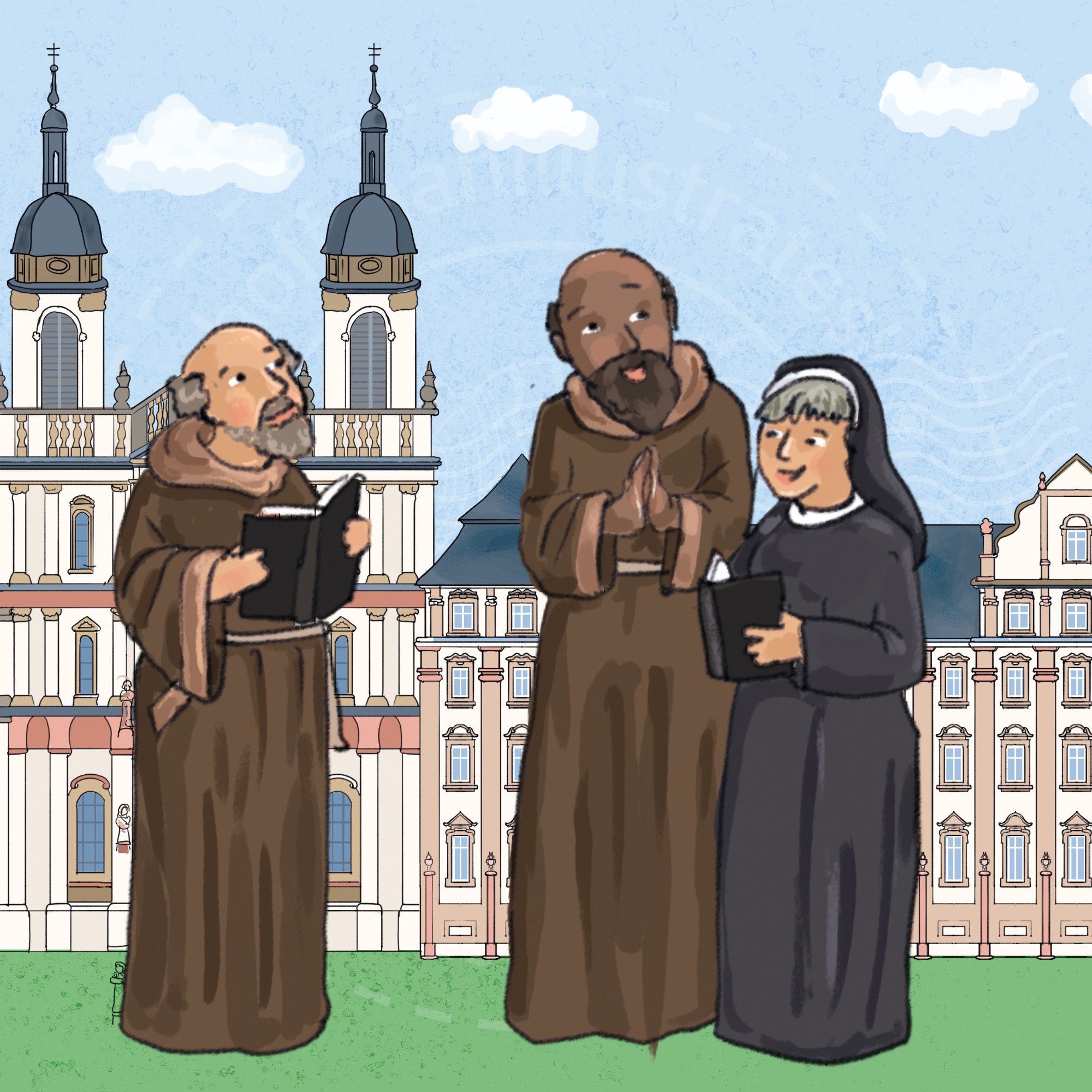
Carnival – A Colorful, Confetti-Filled, Fanciful, Hustle and Bustle
Author: Kimberley Hoffman
Est. Reading Time: 6 Minutes
The Excitement of Carnival’s Colorful Hustle and Bustle
Carnival, often called the 5th season of the year, is definitely the liveliest time of year and is always a popular motif in my Wimmel books.
Anyone who knows Carnival knows how much fun it can be. Its colorful chaos only rivals the hustle and bustle in my Wimmel books.

Strictly Catholic, But highly entertaining!
In Baden-Württemberg, Carnival is usually celebrated in Catholic regions, such as those immortalized in my Wimmel books, with »Prunksitzungen« (Fools’ Court Banquets) and Carnival parades. But why mainly in Catholic areas? Don’t the members of the Protestant Church, to which I belong, understand any fun?
In medieval Catholicism, there were many different periods of fasting. One of the longest, Lent, lasted forty days from Ash Wednesday to Easter. Devout Christians were not allowed to eat meat during this time. If there were any perishable winter provisions left, they had to be eaten before the long fast. During Lent, people were not allowed to drink any alcohol other than beer. That’s reason enough for some pre-fasting merriment, isn’t it?
During Carnival in the Middle Ages, there was a role reversal between clerics, who were at the bottom of the career ladder, and higher clergymen.
Later, the citizens took up this ritual and began to organize festivities with music and costumes in the period before Lent. In some areas, the children even took on the role of substitute pope.
Was Luther a Party Pooper?
Martin Luther and his followers didn’t believe in fasting. The exuberant celebrations around Carnival in these areas gradually fell into obscurity.
In the 18th century, war and oppression by occupying powers further rained on the not-so-proverbial parades.
The Carnival Bust and Boom in Baden-Württemberg
In a conversation with my relatives from Heidelberg, I found out that Carnival was not celebrated on such a grand scale in their childhood. My cousin’s wife grew up in a Swabian town near Tübingen. She told me that there was “usually only one Fastnachtsküchele at the most” before the start of Lent. But no big celebrations.
What is a Fastnachtsküchele? It’s also known in the dialect as “Fasnachtsküchele” or perhaps as “Fastnetsküchele”. It is a sweet yeast pastry that, like New Year’s Eve doughnuts, is fried in fat and sprinkled with a cinnamon and sugar mixture. Unlike doughnuts, the dough is formed into a flat shape and not filled. I have found a delicious recipe for you with very basic ingredients. Try it out for yourself.
If you bake the Fastnachstküchele, post a few photos of it and tag me on Instagram @hoffmanillustrates use the hashtag #carnivalpastry. I’m already crazy to see your photos with the Carnival pastries.
My relatives have told me that the festivals in Baden-Württemberg are much younger festivals. They have only become more popular in the last twenty or thirty years thanks to television broadcasts. (Up to the late 1980s and early 1990s, Germany only had three television stations).
My research confirmed this. Planet-wissen.de says that today’s festivals are not very old and don’t have much in common with the old religious Carnival festivals.
Carnival in my Wimmel books
In my research for my previous Wimmel books, which are all about regions in Baden-Württemberg, I came across many different traditions. Every town is unique. The costumes have their own meaning, be it as witches, devils or even angels. You can find them in “Der Hohenlohekreis wimmelt” and in “Schwaben wimmelt”.

Waldenburg’s Fiery Festival
The people of Waldenburg dress up as devils for Carnival. This is because a long time ago there was a costume party on Fat or Shrove Tuesday, also known in the USA as Mardi Gras, at the castle. The ladies dressed up as angels and the men as devils. It was actually forbidden to celebrate Carnival in Waldenburg at the time.
There was a terrible fire in the castle that evening, which spread to the costumed people. Everyone ran out of the castle, their costumes consumed with flames. It looked very frightening, and people in Waldenburg commemorate the tragedy today in their Carnival parades.

The Pigeon Market in Mulfingen
The Pigeon Market in Mulfingen is actually a festive market that takes place during Carnival. However, it does have a carnival parade with witches and other carnival creatures.

Crazy Carnival in Tettnang at Lake Constance
There is a real Carnival guild in Tettnang on Lake Constance. It organizes children’s balls, castle balls, visits to kindergartens and retirement homes. It brings colorful cheerfulness after the dark winter.
Fun Fact: the Swabian-Alemannic Carnival is considered an “intangible cultural heritage” and is recorded as such in the federal register. Although the Swabians are said to go to the basement to laugh, this shows how much fun they are.

Rottweil’s Guild of Fools
Rottweil, the oldest city in Baden-Württemberg, also celebrates the “Swabian-Alemannic Fasnet”, as it is called in the Swabian dialect. In the photo gallery of the Rottweil Fools’ Guild, you can see the religious roots of Carnival in the ornate masks and costumes. It’s well worth taking a look.
What are you waiting for? Throw yourself into the colorful, fanciful hustle and bustle of Carnival! Have a blast, you Carnival crazies!


